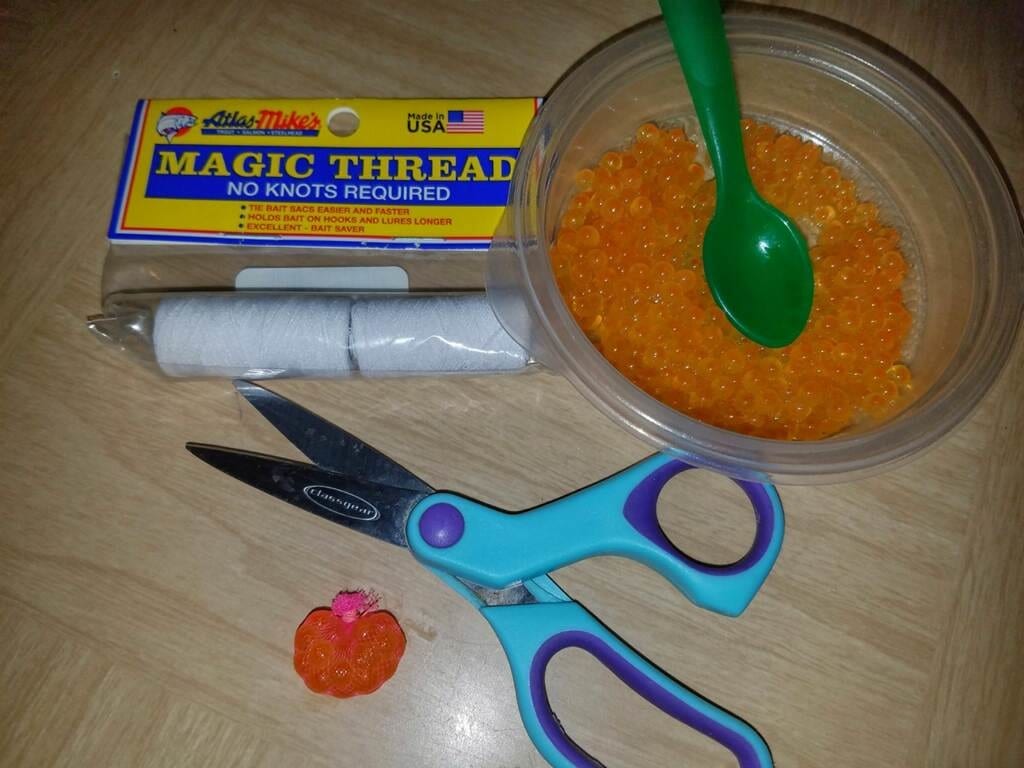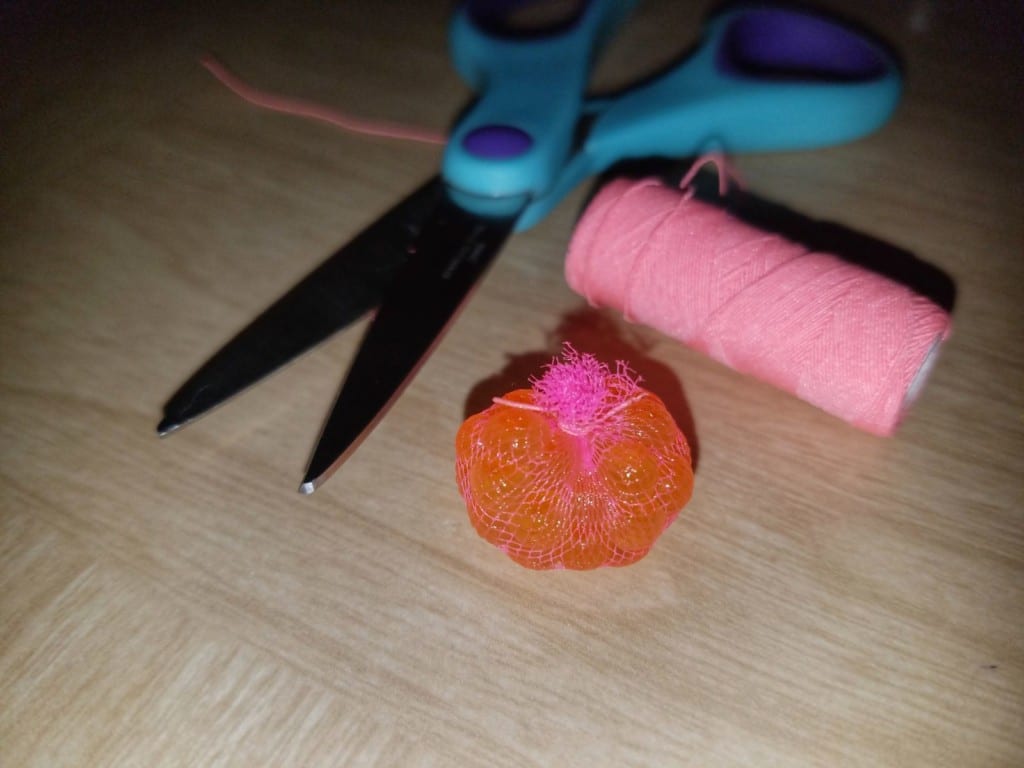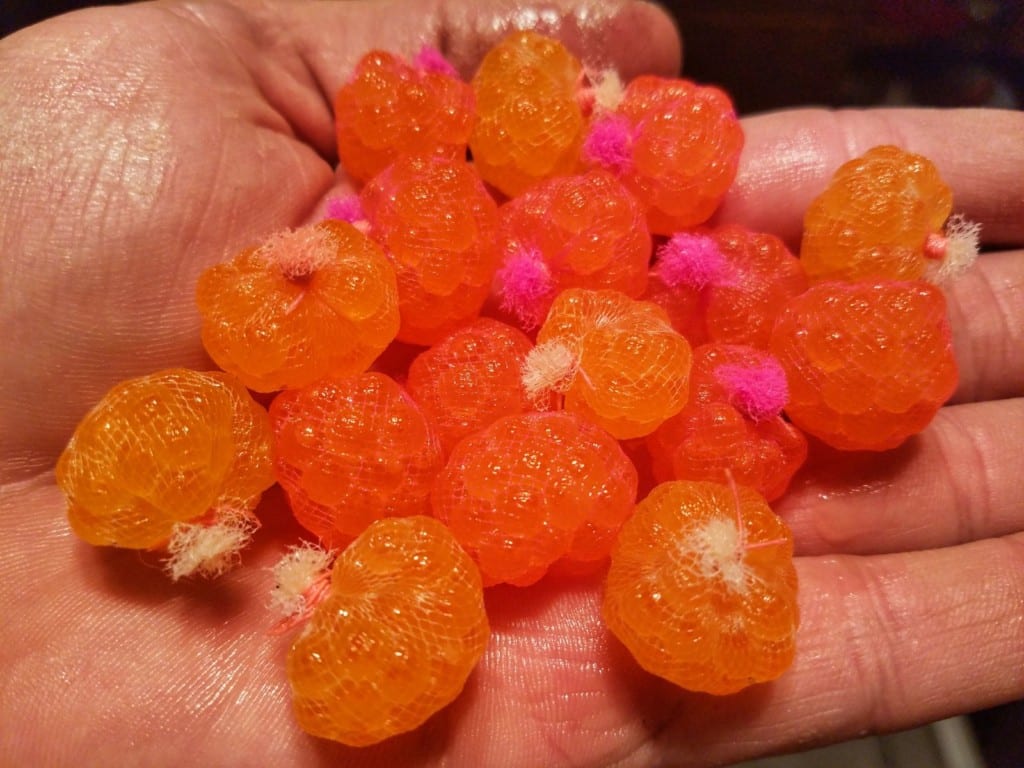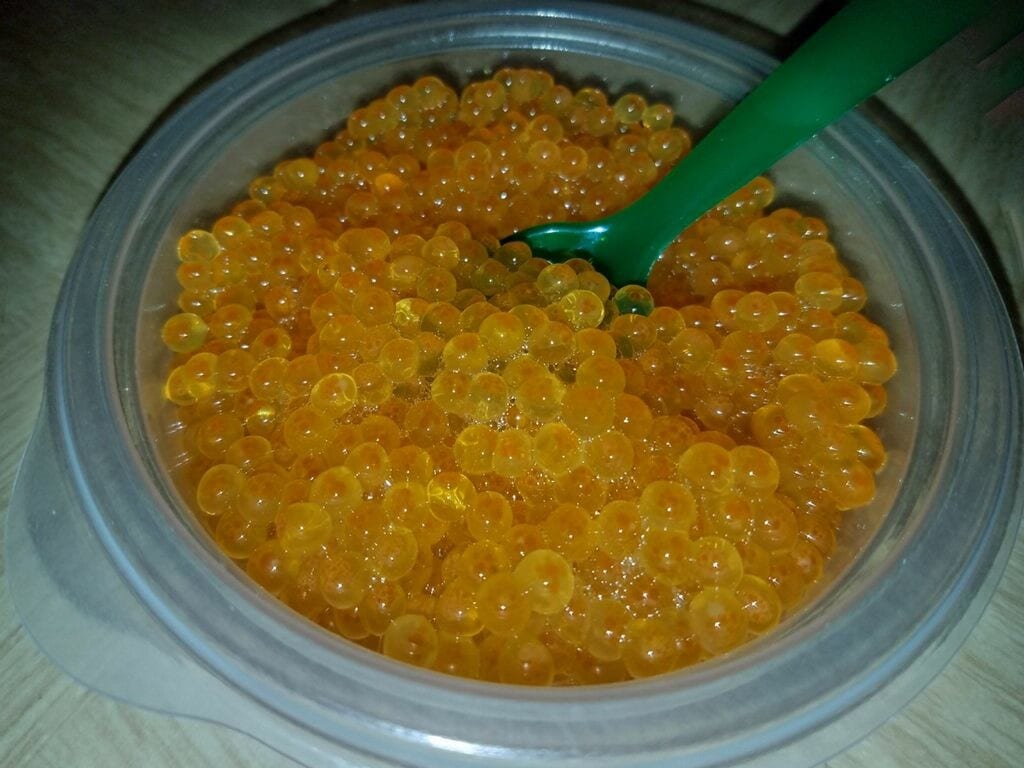Steelhead
From the Bait Lab: Spring Spawn Sack 101
By: James Swearingen
This time of year most anglers think that because there’s colder water you want to use a smaller spawn sacks when steelhead fishing. I don’t subscribe to that. Instead I prefer larger bait and still catch plenty of fish. As with all fishing the key is experimenting.
Size Matters
When I tie egg sacks I tie several sizes. The smallest ones will be the size of a dime, the medium size is as big as a nickel and the largest is a quarter. When fishing I always start out with the biggest sacks. If I make a couple drifts with the largest sacks and don’t catch anything I’ll try the medium size. If they don’t hit on that I’ll go to the smaller size. I bring all these sizes every time. It’s good to have options and let the fish decide what size or color egg sack they want that day.
Color Matters
This time of year I pay attention to water color and clarity before I decide what color Atlas Mike’s netting to use. When the water is clear natural colors, such as white and peach, work best. Blue is the best when fish are being finicky. Most anglers don’t use blue netting. Nevertheless, blue can be effective because the steelhead don’t see it often. Bright, vivid colors, like pink and chartreuse, are best when the water is dirty.
Single Egg Numbers
One common question many anglers ask is how many eggs should be placed in a sack. That can be tough to answer because it depends on if you are using Chinook, steelhead, coho or trout eggs. Personally, for the smallest size egg sack if I’m using king eggs, which tend to be 8mm eggs, I’ll use four per sack. With steelhead/brown trout eggs seven to eight per sack is necessary because they are smaller eggs. For the largest bags 20 eggs per bag is best.
Expert Tip: Use a baby spoon to place eggs in netting. It works great for measuring the amount of eggs you want to use in the sack.
How To Tie
There’s no science to tying spawn sacks. I’m going to show you the way I prefer to tie them.

Step 1: Choose Netting & Add Single Eggs
Atlas Mike’s netting comes in rolls and squares. I prefer squares. To get started choose whether you want to use squares or rolls and then pick what color netting is best for your local system. I use the 4×4 squares. The larger netting is easier for you to work with, if you aren’t using a machine, which most of us aren’t these days.
Everyone has his or her own method. Meanwhile, I tie a dozen sacks at time. To do so, I’ll lay 12 squares of netting down and then fill them up with BorX O Fire cured eggs. As mentioned above, this number changes depending on the size of the sacks I’m using.

Step 2: Working with Squares
One a time I’ll grab the square (with the eggs in them) and lay it in my palm. Then, with my other hand I’ll grab the four corners of the netting, pull it together and begin to twist. Once you have the classic egg sack shape (pictured below), pinch it with your fingers as close to the egg sack as you can.

Step 3: Employ Magic Thread
Now that it’s secure (via your pinch) take Magic Thread and wrap it around the bait 10 times.

Then, hold the string tight and use a scissors to cut the string with the netting. Be sure not to cut the netting too close to the knot. If you do the bag can explode while casting. Repeat this process for however many colors of spawn you want to tie. I tie 12 white, 12 pink, 12 peach, 12 chartreuse and sometimes blue. This way I’ll have the colors covered for when I’m fishing.

Expert Tip 2:
In my world what color Magic Thread I use to tie these sacks is important. Sometimes the color you choose can trigger a reaction bite. Keep in mind, when eggs come out of a fish there’s blood on the eggs. For example, with natural color netting, like white or peach, I’ll use Red or Pink Magic Thread. Doing so gives it contrast. I describe it as a blood dot on the egg sack, which is natural. Furthermore, I pair Pink Magic Thread with chartreuse netting and Chartreuse Magic Thread with pink or red netting. Simply offset the bag with a different color knot (Magic Thread).

Storage:
It’s ideal to place spawn sacks in a liquid-tight container so they don’t leak in your tackle bag or vest. I always store them in the fridge for optimal freshness. Leaving them at room temperature can make the eggs go bad quicker.
Hooking:
When hooking the egg sacks I hook them on the opposite side of the knot just through the netting.

Editor’s Note: James Swearingen is the founder of Steel City Anglers. To follow the page please visit https://www.facebook.com/SteelCityAngler412.









